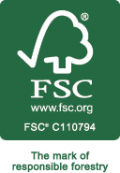For a glossary of print-related terms, click here
-
Where can I download drivers, Yale shields or other files?
You can download many commonly-used files from the YPPS download page.
-
How can I send large graphic files to YPPS?
The Secure File Transfer Facility service (files.yale.edu) previously recommended to transfer files to YPPS is no longer supported by the vendor and has been retired at Yale. YPPS clients should instead use OneDrive to transfer files.
Click here for instructions on how to access OneDrive online.
-
Where is YPPS located?
344 Winchester Avenue, New Haven 203-432-6560
Click here for map -
What are the hours of the YPPS Sales Counter?
Academic Year:
Monday - Friday
8:30am - 5:30pmSummer:
Monday - Friday
8:00am - 4:30pmClosed Saturday and Sunday
-
Who can I call or email to submit an order or to contact YPPS?
Contact one of our customer service representatives.
-
What forms of payment does YPPS accept?
Credit Cards
Departmental COAs
Check -
Who do I call for help with questions on completing the order form?
Call one of our customer service representatives.
-
How do I find out the cost of a job?
Please contact YPPS Customer Service for a price quote.
-
How do I check the status of my job?
To check the status of your YPPS Work Order, please contact YPPS Customer Service.
-
What is an average turn-around time to complete a job that requires typesetting and Graphic Design?
Depending on the job requirements, we typically estimate 5-7 business days.
-
What is the average turn-around time for photocopying?
Typically 24 hours.
-
Can Business Cards be printed more quickly and for fewer than 500?
Yes, Using digital printing rather than the offset press.
-
What are the most common programs that YPPS uses?
Adobe Acrobat
Microsoft Excel
Adobe Illustrator
Adobe InDesign
Adobe Photoshop
Microsoft Powerpoint
Microsoft Word
Glossary
- Background Tint
Overall coverage of paper with a light colored ink or a screen tint. Also called base color. Printers use background tints to simulate colored paper.
-
Bit-mapped
Used for photos, scans, and created by “paint” programs, having a defined width and height; scaling causes pixellation.
-
Booklet Envelope
Large, opens on the long dimension, and is designed to hold a booklet.
-
Brochure
A small booklet or pamphlet, often containing promotional material or product information.
-
Bullet
Bold dot used for typographic emphasis or to identify elements in a list.
-
Business Envelope
Envelope with opening and flap along the long edge, such as a #10. Also called banker, commercial, or official envelope.
-
Collating
To assemble in proper numerical or logical sequence.
-
Color Break
In multicolor printing, the point, line, or space at which one ink color stops and another begins. Also called break for color.
-
Counter
The fully or partially enclosed interior white space of a character.
-
Crop
To eliminate portions of an image so the remainder is more useful, pleasing, or able to fit the layout.
-
Desktop Publishing
Desktop publishing refers to the process of using the computer to produce documents such as newsletters, brochures, books, etc.
-
Digital
Expressed in digits, especially for use by a computer.
-
Dye Sublimation
“Dye” is just what it implies, the special inks or dye used to reproduce an image. “Sublimation” (in definition) is the process when a solid has the ability to melt or transfer from its solid state to its gaseous state bypassing the liquid state as you would see with “dry ice”.
-
Editorial
An article in a publication expressing the opinion of its editors or publishers.
-
Electronic Publishing
To typeset, create graphics, and layout pages on a desktop computer. Finished pages are output to a laser printer, image setter, or plate maker, which is then put on a printing press.
-
Embossing
Producing a raised design, pattern, or lettering by stamping or impressing on it an engraved die.
-
Graphic
Of or relating to written or pictorial representation.
-
Gray Scale
Strip of standard gray tones from white to black that is used to measure tone range and contrast when placed next to the original layout. A reflection or transmission film strip showing neutral tones in a range of graduated steps. It is exposed alongside originals during photography and used to time development, determine color balance, or to measure density range, tone reproduction, and print contrast. Gray scales can also be used to check focus and resolution.
-
Inline
An inline image is one which is an integral part of the document - instead of having a paragraph of text, or a list, you have a picture. The image has its defined place in the document, and the end user has little or no control over its reception.
-
Internet
A matrix of networks that connects computers around the world.
-
Laminating
Forming, or separating into, scales or thin layers.
-
Letterpress
A printing process that utilizes raised text and images. The surface of the type/pictures are inked and then a sheet of paper is pressed against the inked surface.
-
Logo
An image used as a company banner or icon. It is most often used in letterheads, advertising and on products to identify the company. Logos can contain text, graphics or both in combination.
-
OCR
Optical Character Recognition. The ability to turn images of machine printed characters into machine readable characters. Images of the machine printed characters are extracted from a bitmap of the scanned image. Forms can be scanned through an imaging scanner, faxed or computer generated to produce the bitmap.
-
Padding
A number of sheets of paper of the same size stacked one on top of the other and glued together at one end; a tablet.
-
Perforating
To pierce, punch, or bore a hole or holes in; penetrate.
-
Plastic Comb Binding
Offers unparalleled flexibility for updating materials - add or remove pages and simply rebind the restored document. It thoroughly secures documents up to two inches thick.
-
Posters
A large, usually printed placard, bill, or announcement, often illustrated, that is posted to advertise or publicize something.
-
Scan
To read an image using a pinpoint beam of light and saving it as an electronic file to be used in desktop publishing.
-
Scoring
A notch or an incision, especially one that is made to keep a tally.
-
Stapling
To secure or fasten by means of a staple or staples.
-
Tabbing
A projection, flap, or short strip attached to an object to facilitate opening, handling, or identification.
-
TIFF
Tagged Image File Format. A file format for exchanging bitmapped images (usually scans) between applications. This format works well for cross platform files.
-
Transparencies
A transparent object, especially a photographic slide that is viewed by light shining through it from behind or by projection.
-
Typestyle
Variations of a typeface such as bold, italic, black, oblique, roman, condensed, extended and compressed.
-
Typeface
All characters of a single design, in all styles, sizes and weights.
-
VeloBind Strip
Velobind/SureBind is the ultimate in sophistication. You can bind up to three inches of paper into a sleek, compelling document. No binding style is more secure, because VeloBind and SureBind strip binding literally locks pages in place.
-
Vector Files
Also called “geometry” files. Are used for diagrams, illustrations, etc., and created by “draw” programs.
-
Wire-O Binding
Allows you to conveniently wrap pages all the way around for compact handling. Its wire loops encircle pages, tightly holding documents up to an inch thick. The look is simple and high-tech.
-
Komatex, Celtec, Trovicel, Sintra
This product is a rigid, opaque plastic with a high quality semi gloss finish. It has excellent presentation, is easy to cut, easy to wash, is durable, lightweight and waterproof. In 1/8” thickness many colors are available. White is usually the only color available in the 1/4” thickness. Any color can be had, as this is an easy to paint material. This product is normally used for high quality indoor signs. Applications include retail signs, displays, exhibits, indoor office and architectural signs.

 YPPS develops customized apps for all mobile platforms. We will meet with you to determine your exact needs and develop your app from the ground up. Contact
YPPS develops customized apps for all mobile platforms. We will meet with you to determine your exact needs and develop your app from the ground up. Contact  The YPPS BluePrint Team manages the Copier Rental Program and the PaperCut Program, we customize our services based on your specific needs.
The YPPS BluePrint Team manages the Copier Rental Program and the PaperCut Program, we customize our services based on your specific needs. Over the last 25 years, YPPS has been able to procure and provide top quality custom specialty items and more to the Yale community. With a dedication to quality, turnaround, and cost, our Promotional Items & Solutions department has partnered with local Yale-approved vendors to produce all of our products. We take pride in knowing that we can facilitate these projects with great service and quality.
Over the last 25 years, YPPS has been able to procure and provide top quality custom specialty items and more to the Yale community. With a dedication to quality, turnaround, and cost, our Promotional Items & Solutions department has partnered with local Yale-approved vendors to produce all of our products. We take pride in knowing that we can facilitate these projects with great service and quality. YPPS is now an FSC certified vendor. The Forest Stewardship Council™ (FSC) is an international not for-profit, multi-stakeholder organization established in 1993 to promote responsible management of the world’s forests. One of its main tools for achieving this is independent certification and labeling of forest products, which offers customers the ability to choose products from socially and environmentally responsible forestry.
YPPS is now an FSC certified vendor. The Forest Stewardship Council™ (FSC) is an international not for-profit, multi-stakeholder organization established in 1993 to promote responsible management of the world’s forests. One of its main tools for achieving this is independent certification and labeling of forest products, which offers customers the ability to choose products from socially and environmentally responsible forestry. YPPS is dedicated to supporting the University’s evolving media needs both educational and administrative with excellent customer support, resourceful solutions and indispensable services.
YPPS is dedicated to supporting the University’s evolving media needs both educational and administrative with excellent customer support, resourceful solutions and indispensable services.